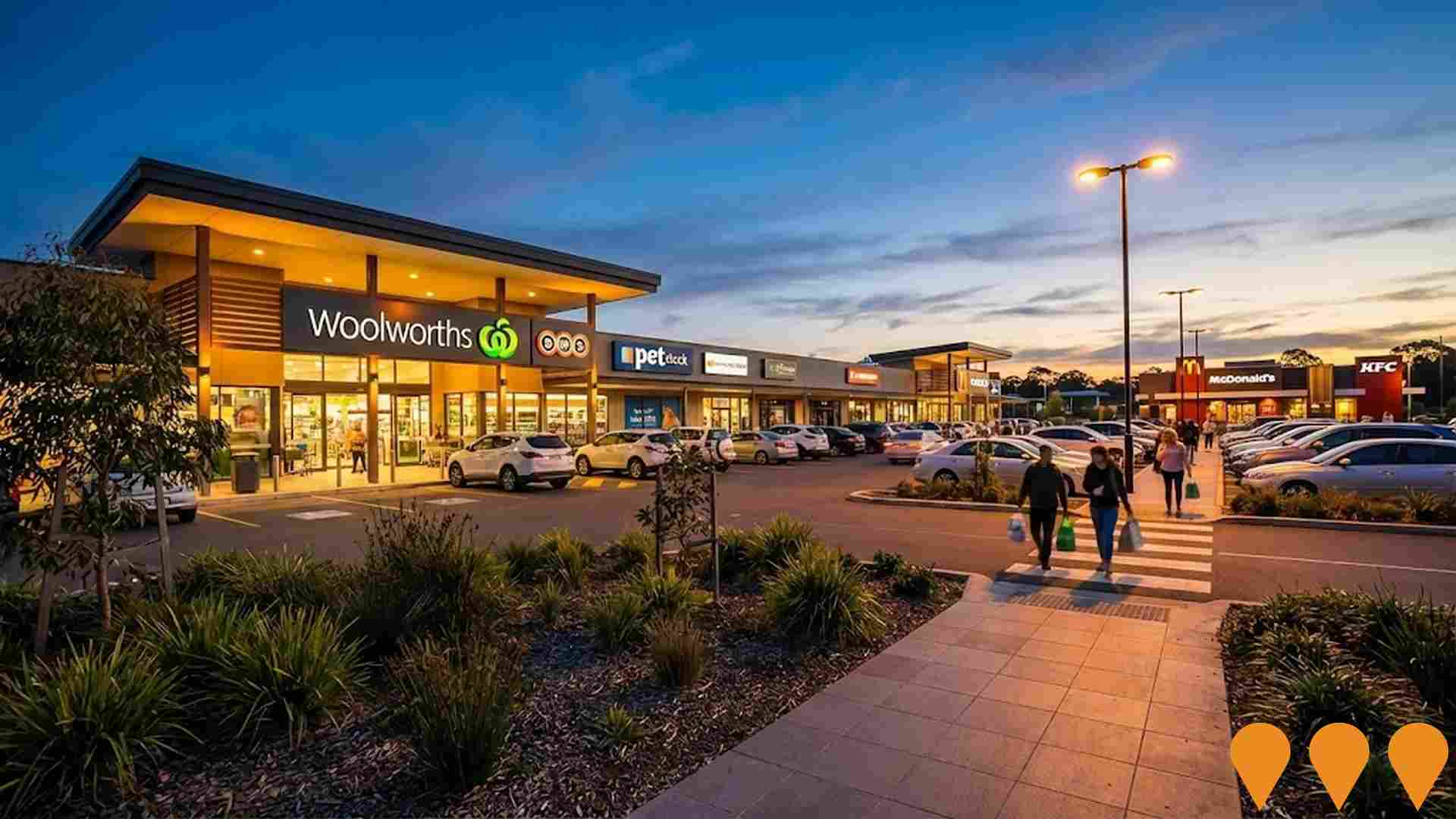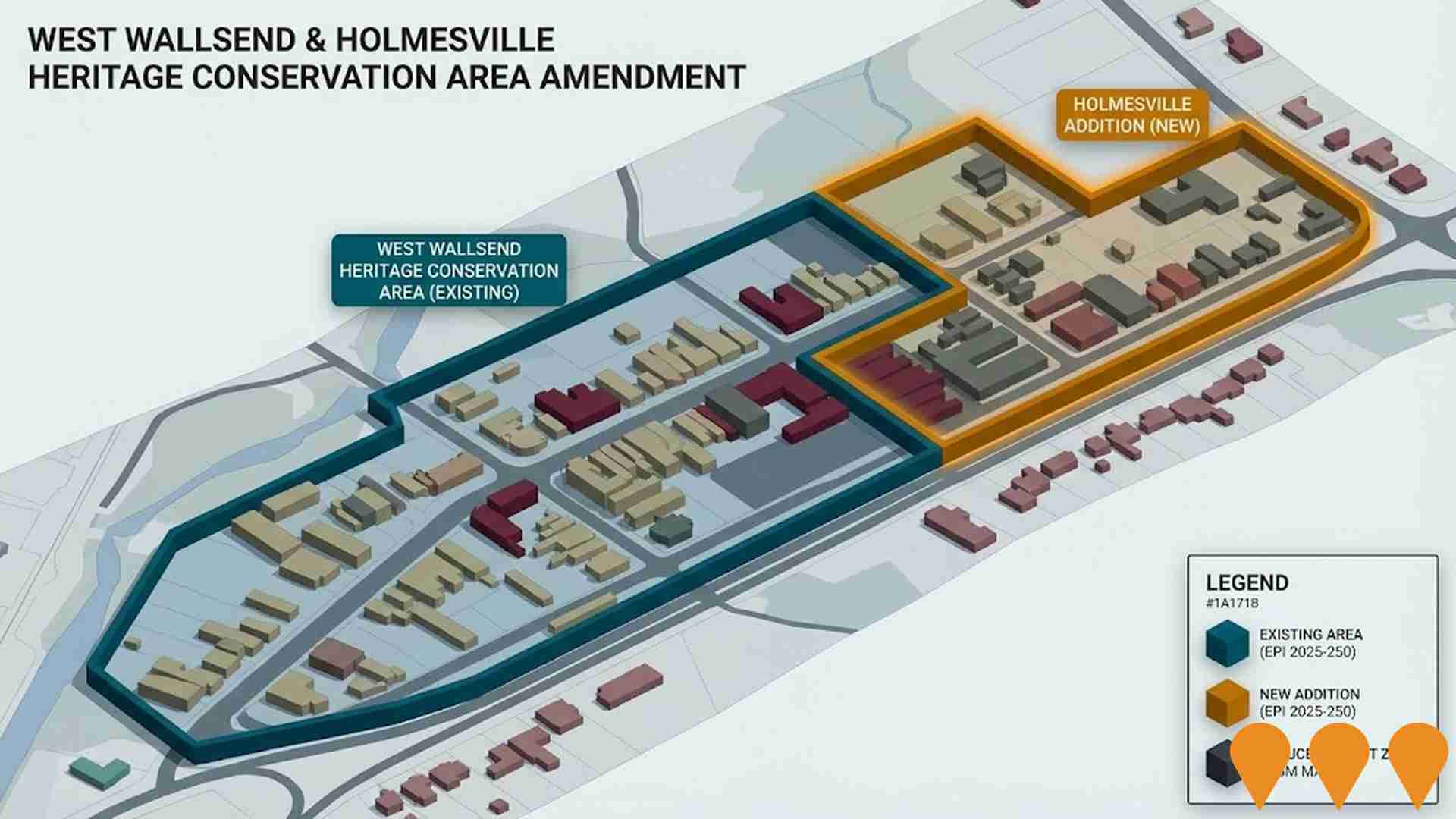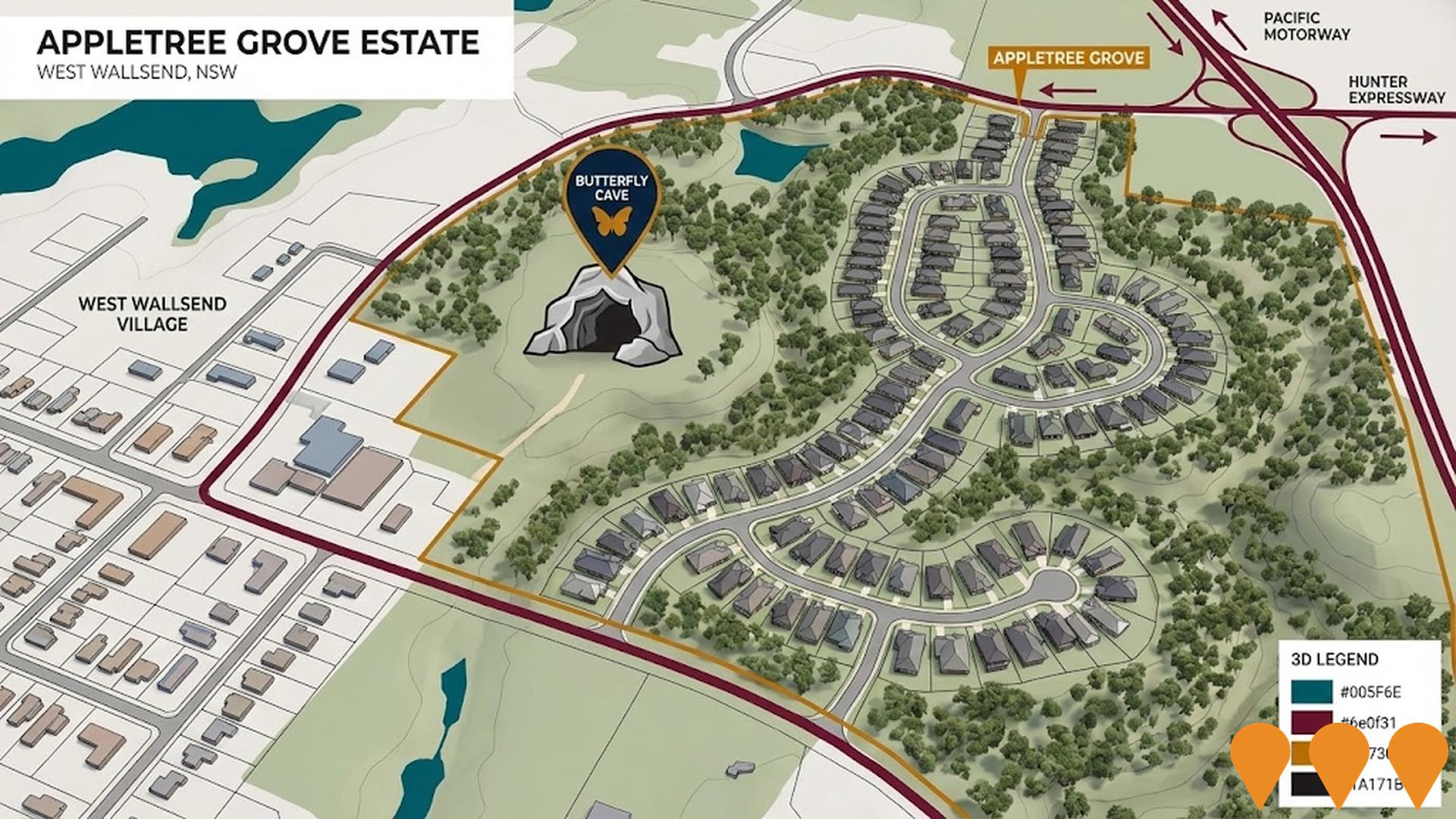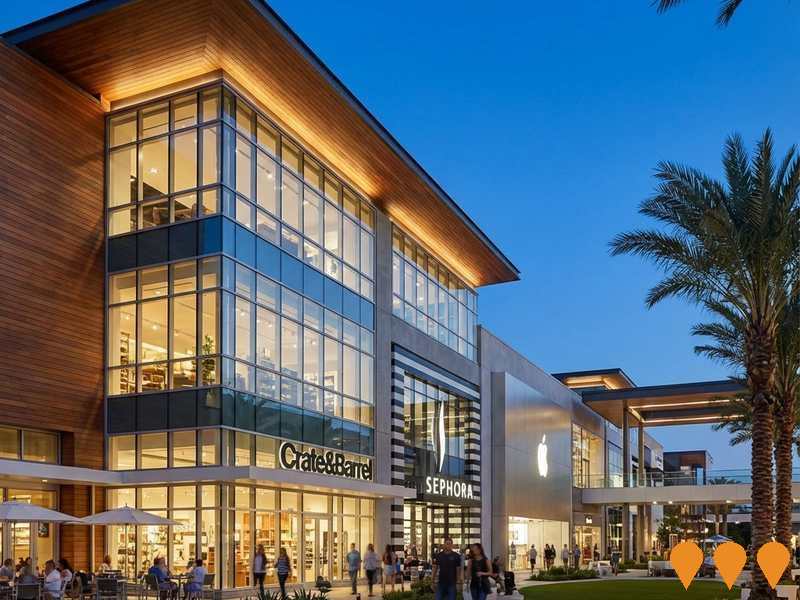Chart Color Schemes
est. as @ -- *
ABS ERP | -- people | --
2021 Census | -- people
Sales Activity
Curious about local property values? Filter the chart to assess the volume and appreciation (including resales) trends and regional comparisons, or scroll to the map below view this information at an individual property level.
Find a Recent Sale
Sales Detail
Population
West Wallsend - Barnsley - Killingworth lies within the top quartile of areas nationally for population growth performance according to AreaSearch analysis of recent, and medium to long-term trends
West Wallsend-Barnsley-Killingworth's population was 7,254 as of 2021 Census. By Nov 2025, it is around 7,471, reflecting an increase of 217 people (3.0%). This change is inferred from ABS estimated resident population of 7,455 in June 2024 and additional 174 validated new addresses since Census date. Population density is 103 persons per square kilometer. Over the past decade, it has shown resilient growth with a compound annual growth rate of 1.4%, outpacing its SA4 region. Natural growth contributed approximately 82.2% of overall population gains during recent periods.
AreaSearch uses ABS/Geoscience Australia projections for each SA2 area released in 2024, based on 2022 data. For areas not covered, it utilises NSW State Government's SA2 level projections released in 2022 with a base year of 2021. Growth rates by age group are applied to all areas for years 2032 to 2041. Projected demographic shifts indicate an above median population growth for Australia's regional areas, with the area expected to expand by 1,451 persons to 2041 based on latest numbers, reflecting a total increase of 19.2% over 17 years.
Frequently Asked Questions - Population
Development
AreaSearch assessment of residential approval activity sees West Wallsend - Barnsley - Killingworth among the top 30% of areas assessed nationwide
West Wallsend-Barnsley-Killingworth recorded approximately 40 residential property approvals annually over the past five financial years, totalling 201 homes. As of FY-26, 31 approvals have been granted. The average new residents per year per dwelling constructed between FY-21 and FY-25 was 1.9, indicating a balanced supply and demand with stable market conditions. This figure has eased to 0.8 people per dwelling over the past two financial years, reflecting better supply availability. Development projects averaged $352,000 in construction value.
Commercial approvals totalled $13.4 million in FY-26, suggesting balanced commercial development activity. Compared to Rest of NSW, West Wallsend-Barnsley-Killingworth had around two-thirds the rate of new dwelling approvals per person but ranked among the 87th percentile nationally for building activity. Recent construction comprised 75% detached houses and 25% medium and high-density housing, maintaining the area's traditional low density character with a focus on family homes appealing to those seeking space. This marked a significant shift from existing housing patterns, which were currently 98% houses, suggesting diminishing developable land availability and responding to evolving lifestyle preferences and housing affordability needs.
The location had approximately 100 people per dwelling approval, indicating a low density market. Future projections showed West Wallsend-Barnsley-Killingworth adding 1,433 residents by 2041. Building activity was keeping pace with growth projections, though buyers may experience heightened competition as the population grows.
Frequently Asked Questions - Development
Infrastructure
West Wallsend - Barnsley - Killingworth has strong levels of nearby infrastructure activity, ranking in the top 30% nationally
Infrastructure changes significantly influence local performance. AreaSearch identified 19 projects likely impacting the area. Key projects include West Wallsend Swim Centre Expansion, West Wallsend and Holmesville Heritage Conservation Area Amendment, BlackRock Motor Resort, Cameron Grove Estate. The following details those most relevant.
Professional plan users can use the search below to filter and access additional projects.
INFRASTRUCTURE SEARCH
 Denotes AI-based impression for illustrative purposes only, not to be taken as definitive under any circumstances. Please follow links and conduct other investigations from the project's source for actual imagery. Developers and project owners wishing us to use original imagery please Contact Us and we will do so.
Denotes AI-based impression for illustrative purposes only, not to be taken as definitive under any circumstances. Please follow links and conduct other investigations from the project's source for actual imagery. Developers and project owners wishing us to use original imagery please Contact Us and we will do so.
Frequently Asked Questions - Infrastructure
Cameron Park Plaza
Completed neighbourhood shopping centre featuring Woolworths supermarket, BWS, and 22 specialty tenancies including PETstock, Snap Fitness, medical centre, dining options, and various retail services. Total GFA of 7,037 sqm with 387 parking spaces, serving the growing Cameron Park community.
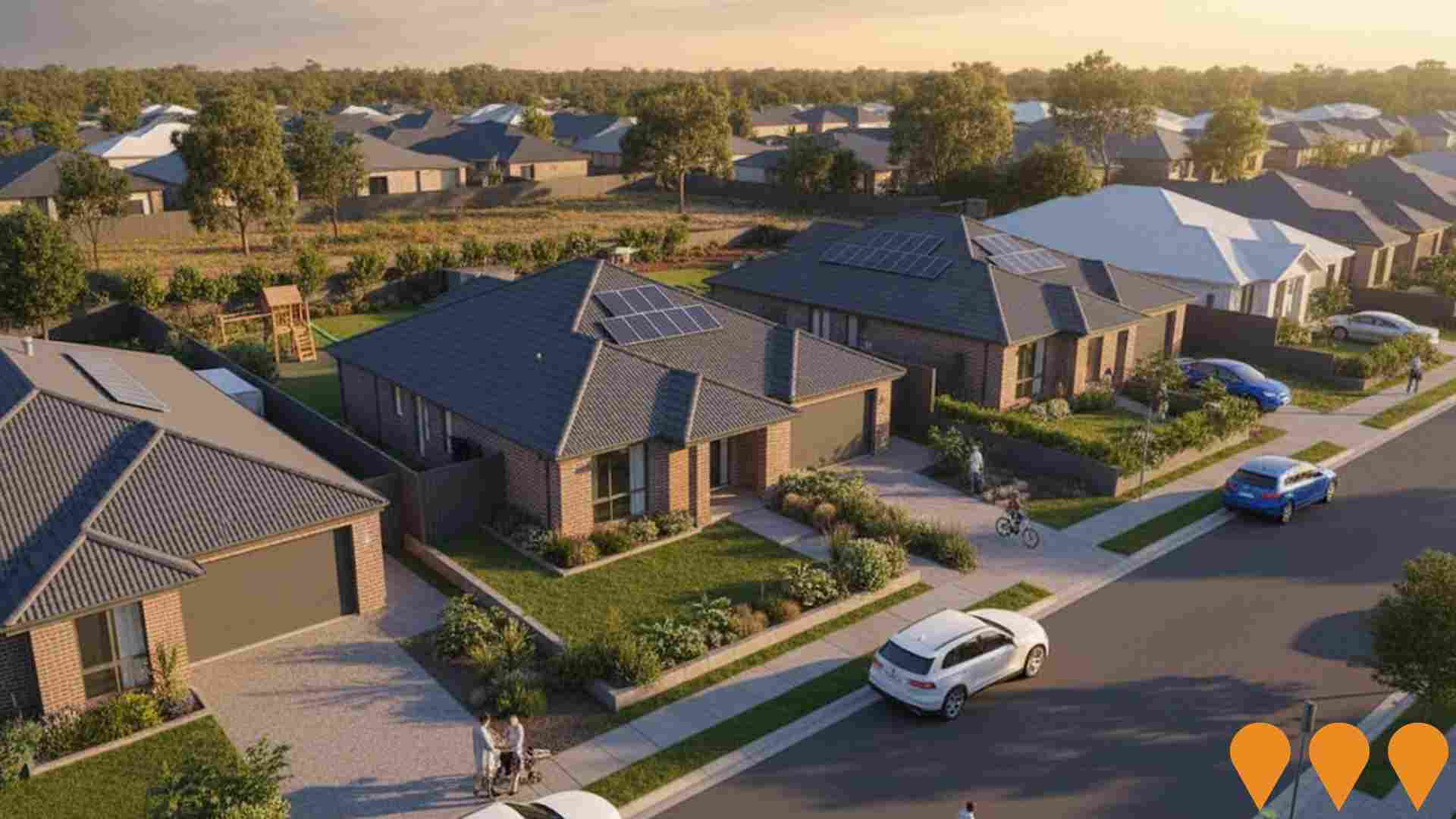
Costco Lake Macquarie Warehouse
The Costco Lake Macquarie Warehouse is a 14,000 sqm retail facility and fuel station located on the former Pasminco smelter site in Boolaroo, NSW. It opened on September 21, 2021, providing bulk retail services, contributing to local employment with over 225 jobs, and supporting the area's redevelopment.
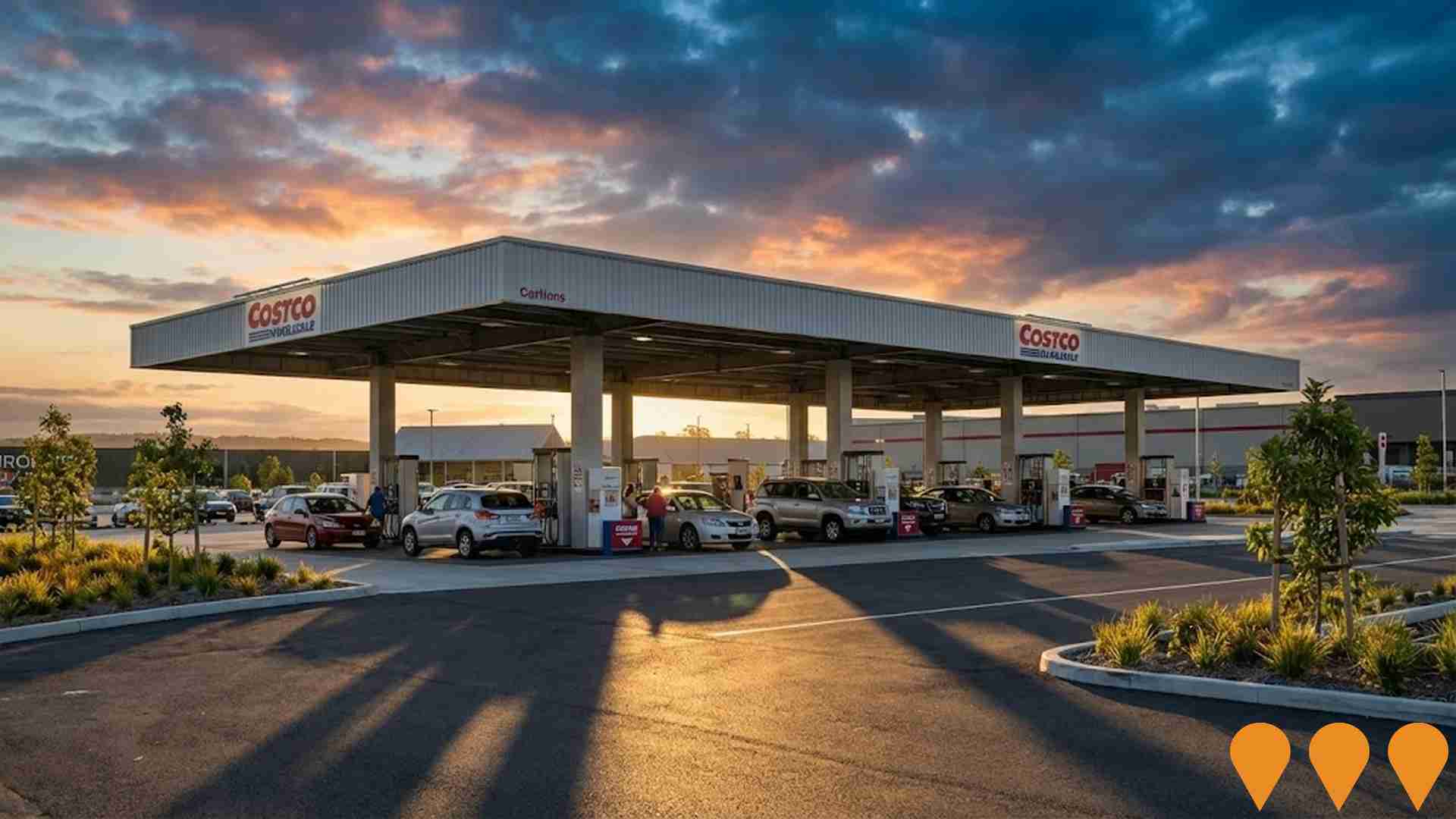
Sugar Valley Library Museum (kirantakamyari)
Co-located library and museum operated by Lake Macquarie City Council in Cameron Park. Opened April 2023, it showcases West Wallsend history with interactive displays including a virtual reality underground coal mine experience, children's Play Museum, tech and workshop spaces.
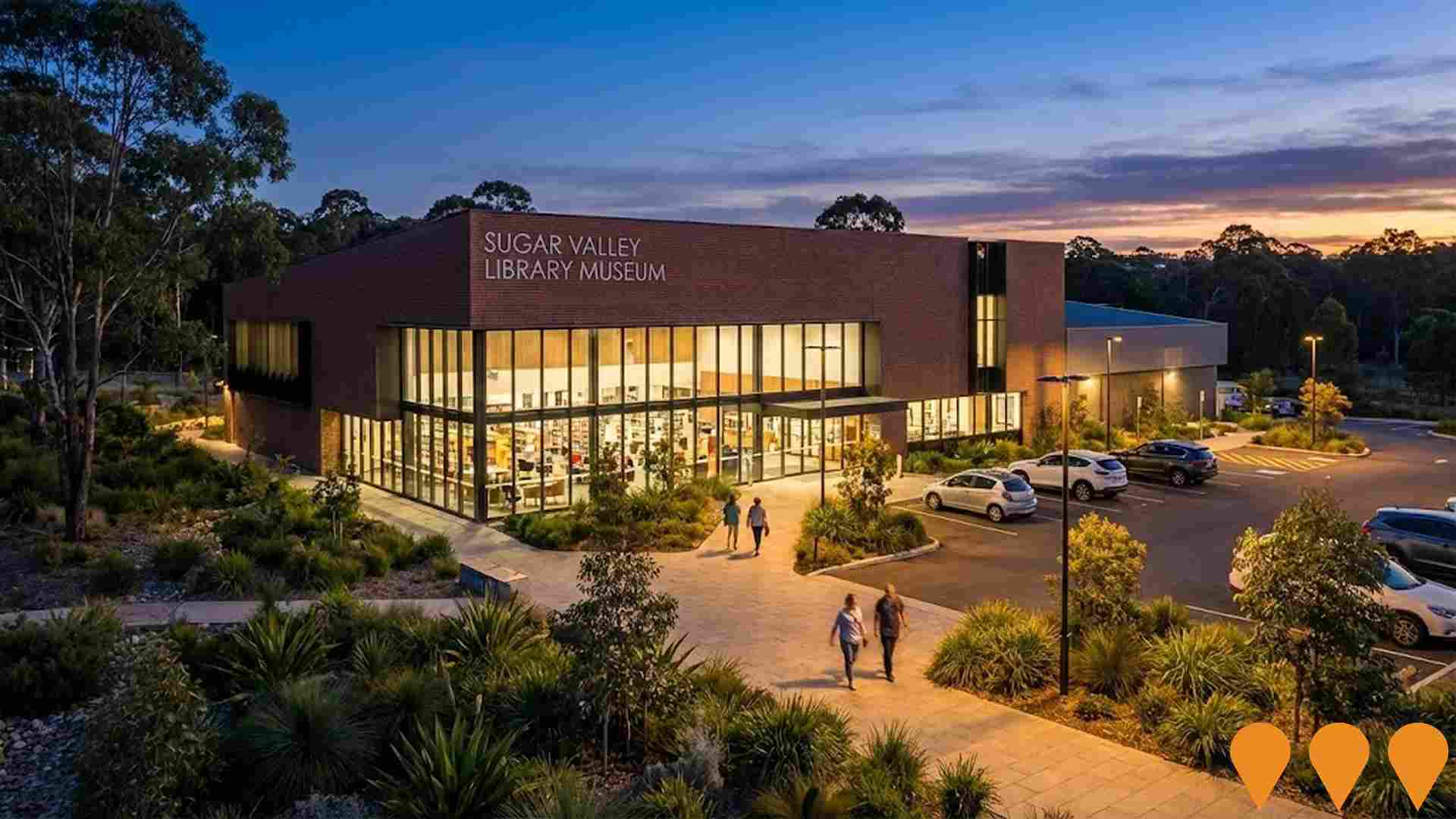
Winten Cameron Park Stage 5 Development
A massive 858-lot residential subdivision valued at $116 million, approved by the Regional Planning Panel in December 2023. Part of Winten Property Group's larger 3,300-home masterplan across 520 hectares spanning Newcastle and Lake Macquarie LGAs. The development includes two new commercial centres, a primary school, and is supported by a $22.6 million Voluntary Planning Agreement providing new parks, playgrounds, sports fields, and shared pathways. Total concept covers 2000 hectares on former coal mining land. The site was purchased from Coal and Allied in 2015 for $65 million.

Northlakes Local Centre Development Site
Prominent 16,015 sqm E1-zoned site in Cameron Park's thriving retail and commercial precinct with dual street frontages to Northlakes Drive and Elanet Avenue. The site offers excellent opportunity for retail, large-format, and essential services development in a rapidly expanding population area with strong demand for convenience retail and family-oriented amenities.

BlackRock Motor Resort
A $95 million motorsport park and resort on a 252-hectare former mine site. Features luxury accommodation, driver training facilities, function centre, go-kart track, cafe, and racing circuits designed by the renowned Tilke Group. The resort will host corporate driving events, performance car experiences, public track days, and driver training courses. First stage includes track construction and cafe establishment.
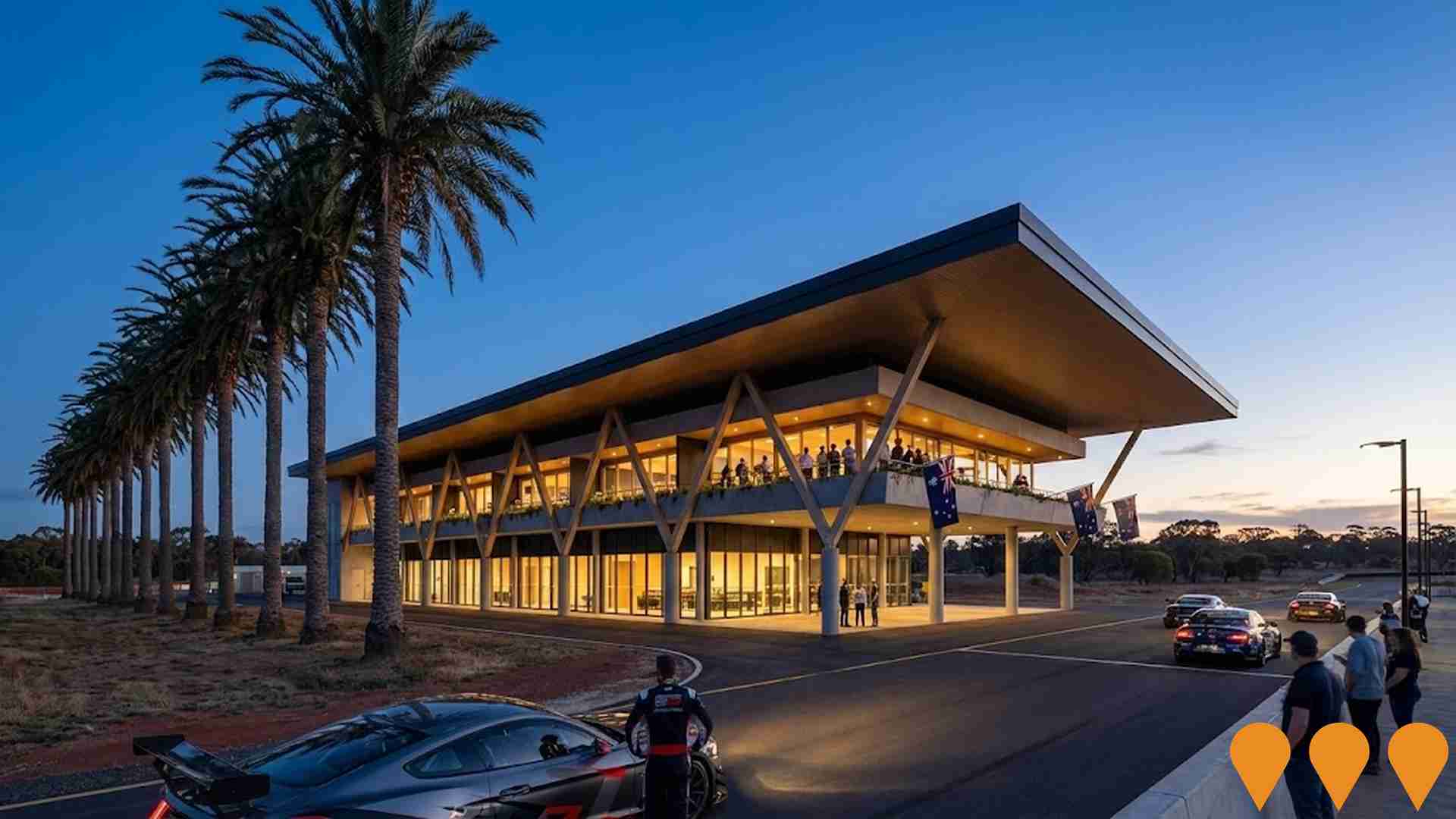
Cameron Grove Estate
300-hectare master-planned residential community in Cameron Park, delivering approximately 2,000 dwellings across house-and-land, medium-density and townhouse product. Includes a completed Woolworths-anchored neighbourhood centre, Harrigans Irish Pub (now open), extensive parklands, lake system, restored historic tramway as cycle/pedestrian path, Pasterfield Sports Complex and future council library site. Current stages include Alight townhouses by RIBA Homes and upcoming Salvation Army aged-care facility.
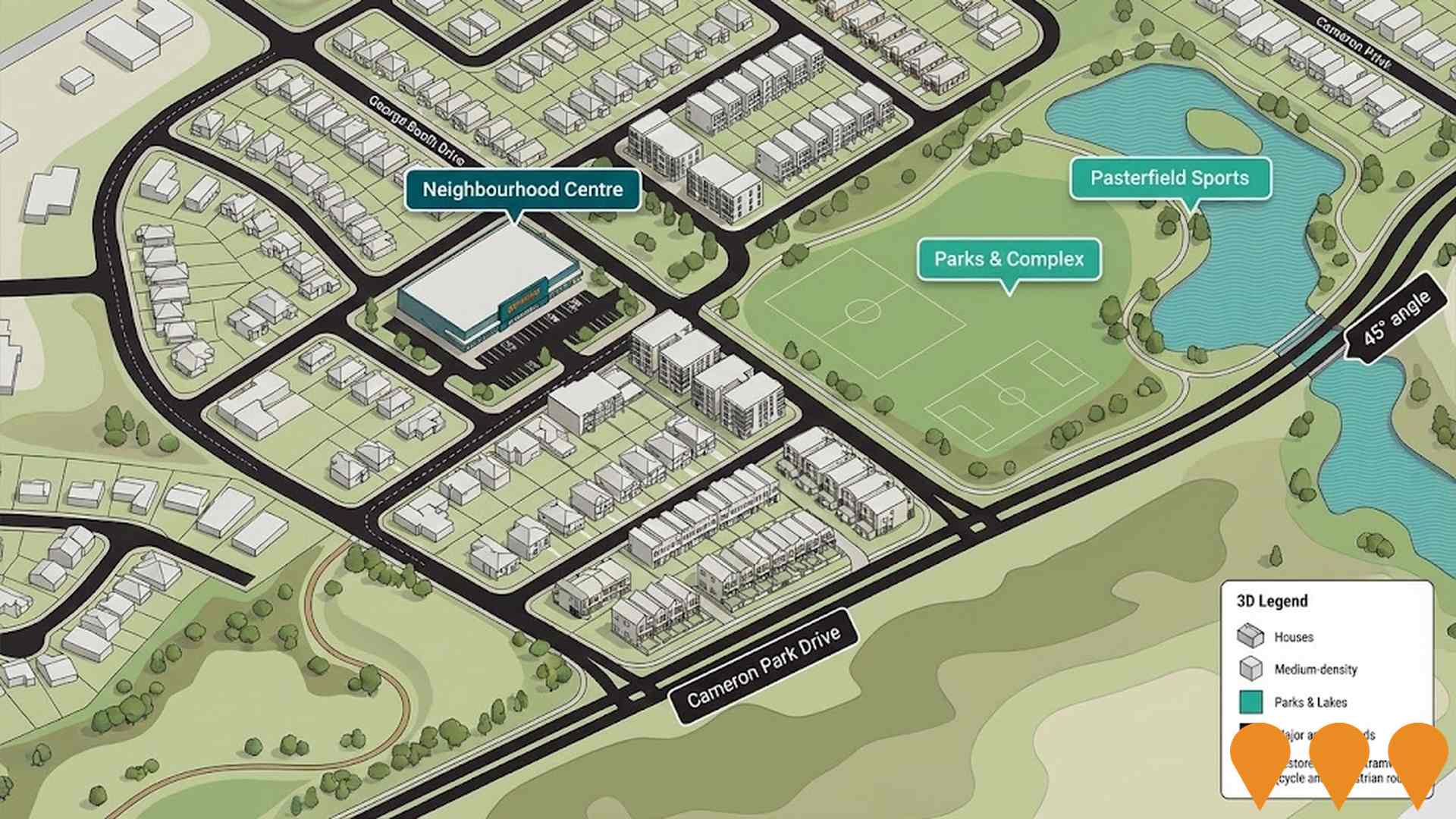
Cameron Grove Estate
Master-planned residential community spanning 300 hectares accommodating approximately 2,000 dwellings in medium density and standard residential blocks. Features full turn-key homes and vacant land with easy access to Cameron Park Plaza, parks, playgrounds, and M1 motorway. Includes Cameron Grove South development with 381-lot subdivision on George Booth Drive. Developed by Roche Group with RIBA Homes as building partner.
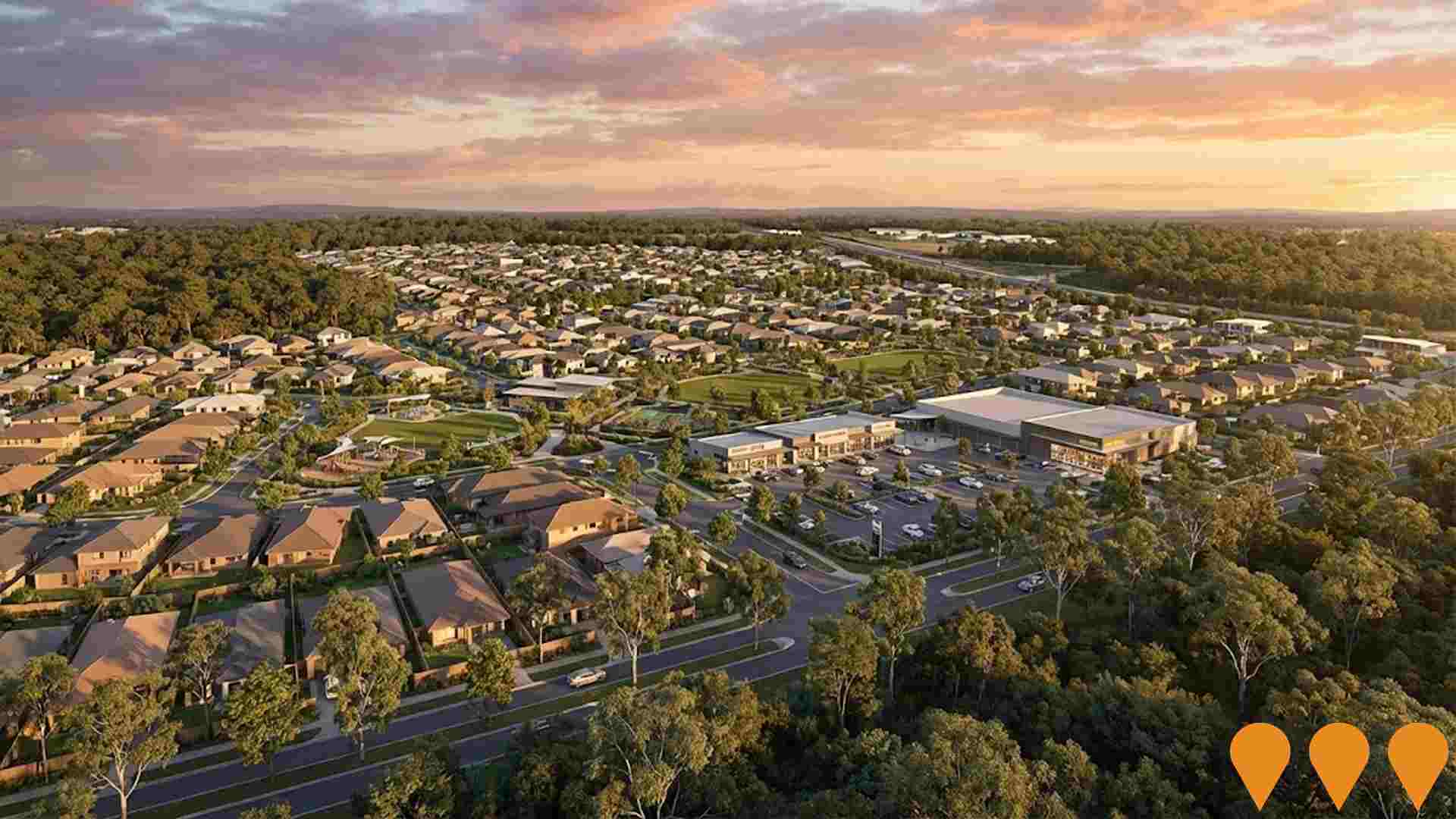
Employment
AreaSearch analysis places West Wallsend - Barnsley - Killingworth well above average for employment performance across multiple indicators
West Wallsend-Barnsley-Killingworth has a balanced workforce with both white and blue collar jobs. The unemployment rate was 2.7% as of June 2021.
Employment growth over the past year was estimated at 2.2%. As of June 2025, 4,115 residents are employed, with an unemployment rate of 2.8%, below Rest of NSW's rate of 3.7%. Workforce participation is higher than standard at 64.6% compared to Rest of NSW's 56.4%. Dominant employment sectors include health care & social assistance, construction, and retail trade.
Construction employment is particularly high, at 1.4 times the regional level. Agriculture, forestry & fishing employs just 0.5% of local workers, below Rest of NSW's 5.3%. Employment opportunities may be limited locally, as indicated by Census data. Over the year to June 2025, employment increased by 2.2%, while labour force grew by 2.5%, causing unemployment to rise slightly. Jobs and Skills Australia forecasts national employment growth of 6.6% over five years and 13.7% over ten years. Applying these projections to West Wallsend-Barnsley-Killingworth's employment mix suggests local growth of approximately 6.4% over five years and 13.5% over ten years.
Frequently Asked Questions - Employment
Income
Income levels align closely with national averages, indicating typical economic conditions for Australian communities according to AreaSearch analysis
West Wallsend-Barnsley-Killingworth had a median taxpayer income of $53,303 and an average of $60,301 in the financial year 2022, according to postcode level ATO data aggregated by AreaSearch. This is below the national average for Rest of NSW, which had a median income of $49,459 and an average income of $62,998 in the same period. Based on Wage Price Index growth of 12.61% since financial year 2022, current estimates for West Wallsend-Barnsley-Killingworth would be approximately $60,025 (median) and $67,905 (average) as of September 2025. According to the 2021 Census figures, household, family, and personal incomes in West Wallsend-Barnsley-Killingworth rank modestly, between the 44th and 51st percentiles. Distribution data shows that the largest segment comprises 37.0% of residents earning $1,500-$2,999 weekly (2,764 residents), reflecting patterns seen in the surrounding region where 29.9% similarly occupy this range. High housing costs consume 15.4% of income, though strong earnings still place disposable income at the 53rd percentile.
Frequently Asked Questions - Income
Housing
West Wallsend - Barnsley - Killingworth is characterized by a predominantly suburban housing profile, with ownership patterns similar to the broader region
The dwelling structure in West Wallsend-Barnsley-Killingworth, as per the latest Census, consisted of 97.9% houses and 2.1% other dwellings (including semi-detached homes, apartments, and 'other' dwellings). This compares to Non-Metro NSW's figures of 89.7% houses and 10.2% other dwellings. Home ownership in West Wallsend-Barnsley-Killingworth stood at 33.4%, with mortgaged dwellings at 50.8% and rented ones at 15.8%. The median monthly mortgage repayment was $1,798, lower than Non-Metro NSW's average of $1,900. The median weekly rent in the area was $390, slightly higher than Non-Metro NSW's figure of $380. Nationally, West Wallsend-Barnsley-Killingworth's mortgage repayments were below the Australian average of $1,863, while rents were above the national figure of $375.
Frequently Asked Questions - Housing
Household Composition
West Wallsend - Barnsley - Killingworth features high concentrations of family households, with a higher-than-average median household size
Family households constitute 79.3% of all households, including 35.9% couples with children, 29.1% couples without children, and 13.1% single parent families. Non-family households account for the remaining 20.7%, with lone person households at 17.9% and group households comprising 2.9%. The median household size is 2.7 people, which is larger than the Rest of NSW average of 2.5.
Frequently Asked Questions - Households
Local Schools & Education
West Wallsend - Barnsley - Killingworth faces educational challenges, with performance metrics placing it in the bottom quartile of areas assessed nationally
The area's university qualification rate is 11.1%, significantly lower than NSW's average of 32.2%. Bachelor degrees are most common at 8.0%, followed by postgraduate qualifications (1.8%) and graduate diplomas (1.3%). Vocational credentials are prevalent, with 47.3% of residents aged 15+ holding them - advanced diplomas at 9.2% and certificates at 38.1%. Educational participation is high at 27.3%, including 9.8% in primary education, 7.3% in secondary education, and 3.1% pursuing tertiary education.
The five schools in West Wallsend - Barnsley - Killingworth have a combined enrollment of 1,262 students. Educational provision is conventional, with two primary and three secondary institutions. School capacity exceeds typical residential needs at 16.9 places per 100 residents compared to the regional average of 12.3, indicating the area serves as an educational center for the broader region.
Frequently Asked Questions - Education
Schools Detail
Nearby Services & Amenities
Transport
Transport servicing is moderate compared to other areas nationally based on assessment of service frequency, route connectivity and accessibility
The analysis of public transport in the West Wallsend - Barnsley - Killingworth area shows that there are currently 90 active transport stops operating. These stops offer a variety of bus services, with a total of 38 individual routes providing weekly passenger trips numbering 712. The accessibility to these transport services is considered excellent, as residents in the area are typically located just 159 meters from their nearest stop.
The service frequency across all routes averages at 101 trips per day, which equates to approximately seven weekly trips per individual stop.
Frequently Asked Questions - Transport
Transport Stops Detail
Health
Health performance in West Wallsend - Barnsley - Killingworth is well below average with prevalence of common health conditions notable across both younger and older age cohorts
West Wallsend-Barnsley-Killingworth faces significant health challenges, as indicated by health data. Both younger and older age groups have notable prevalence of common health conditions.
Approximately 50% (~3,735 people) have private health cover, lower than the national average of 55.3%. Mental health issues affect 11.2% of residents, while asthma impacts 9.7%. A total of 62.3% report no medical ailments, compared to 60.3% in Rest of NSW. The area has 18.3% (1,370 people) aged 65 and over, lower than the 21.9% in Rest of NSW. Health outcomes among seniors present challenges similar to those faced by the general population.
Frequently Asked Questions - Health
Cultural Diversity
The latest Census data sees West Wallsend - Barnsley - Killingworth placing among the least culturally diverse areas in the country when compared across a range of language and cultural background related metrics
West Wallsend-Barnsley-Killingworth had a below average cultural diversity, with 94.1% of its population born in Australia, 94.7% being citizens, and 97.7% speaking English only at home. Christianity was the main religion, comprising 50.6% of people, compared to 54.0% across Rest of NSW. The top three ancestry groups were Australian (34.4%), English (32.3%), and Scottish (8.3%).
Notably, Australian Aboriginal representation was higher at 5.3%, Macedonian at 0.3%, and Welsh at 0.6%.
Frequently Asked Questions - Diversity
Age
West Wallsend - Barnsley - Killingworth's population is slightly younger than the national pattern
West Wallsend - Barnsley - Killingworth has a median age of 38, which is lower than Rest of NSW's figure of 43 but equivalent to Australia's national norm of 38. The age group of 25-34 years old shows strong representation at 15.1%, compared to Rest of NSW's percentage. Conversely, the 75-84 age cohort is less prevalent at 6.0%. According to the 2021 Census, the 75 to 84 age group has increased from 4.3% to 6.0% of the population. Meanwhile, the 5 to 14 age group has declined from 13.3% to 11.6%, and the 45 to 54 age group has dropped from 12.3% to 11.0%. By 2041, demographic modeling suggests that West Wallsend - Barnsley - Killingworth's age profile will change significantly. The 25 to 34 age group is expected to grow by 35%, reaching 1,515 people from the current 1,125. Conversely, numbers in the 65 to 74 age range are projected to fall by 33%.

